Latin name: Bauhinia
Category: perennial flowering plants
Origin: Southeast Asia
Bauhinia - a unique flower, the queen of the tropics
Bauhinia (Bauhinia) - the genus combines amazing, bright, attractive flowering flowering plants that adorn the legume family. This community of vegetation is organized by two hundred species, with absolutely no resemblance in appearance to each other. These wonderful tropical unique ones can be semi-deciduous and deciduous shrubs, as well as lianas and small trees up to ten meters high.
The natural natural areas of distribution of these beautiful exotics are mainly Asia, its South-Eastern part, as well as Australia, America and Africa. The most diverse habitat is closely associated with tropical rainforests, sky-high mountain peaks, swampy areas, savannahs with sharp temperature fluctuations, both seasonal and daily.
Such an interesting name was given to the plant thanks to the famous French botanist Charles Plumier, who immortalized the botanists and systematists of the world of vegetation, the Swiss brothers Johann and Gaspard Baugin. These scientists did a great job of researching and systematizing the flora of the American continent. The official name of this unique culture became after the mention of it by Carl Linnaeus in his work.
Other interesting names for the bauhinia flower are bauhinia and orchid tree. With delight, you can admire this fragrant and charming blooming beauty, which looks very much like orchid flowers. But, alas, the orchid family does not have a plant named orchid tree in its list.
Bauhinia can be seen as a tree, the trunk of which is covered with light brownish or reddish-brown bark. It combines very nobly with the rich green tone of the foliage with its silver tint.
Even a non-blooming bauhinia orchid tree looks original. Its unusual twelve-centimeter leaves represent a two-lobed surface resembling a butterfly. You can also imagine a leaf of bauginia with a heart or a hoof.
The "blades" of the leaves are folded along the vein located in the center, and are in the closed position at night or during the day at high temperatures, too dry soil mixture.
The bauhinia tree looks especially wonderful with blooming fifteen-centimeter bisexual flowers, collected in inflorescences of four things. They are snow-white, yellowish, lemon, peach, scarlet, raspberry, linden, purple, pastel pink.
The lifespan of a flowering bud is from one to seven days. Faded flowers are replaced by new ones. Bauhinia orchid tree is in bloom for up to six months in the warm off-season. The petals of the flower are decorated with thin strokes and specks. After flowering, orchid trees acquire long twenty-centimeter pods with flat seeds - beans.
Bauhinia species
Bauhinia purple (Bauhinia purpurea)
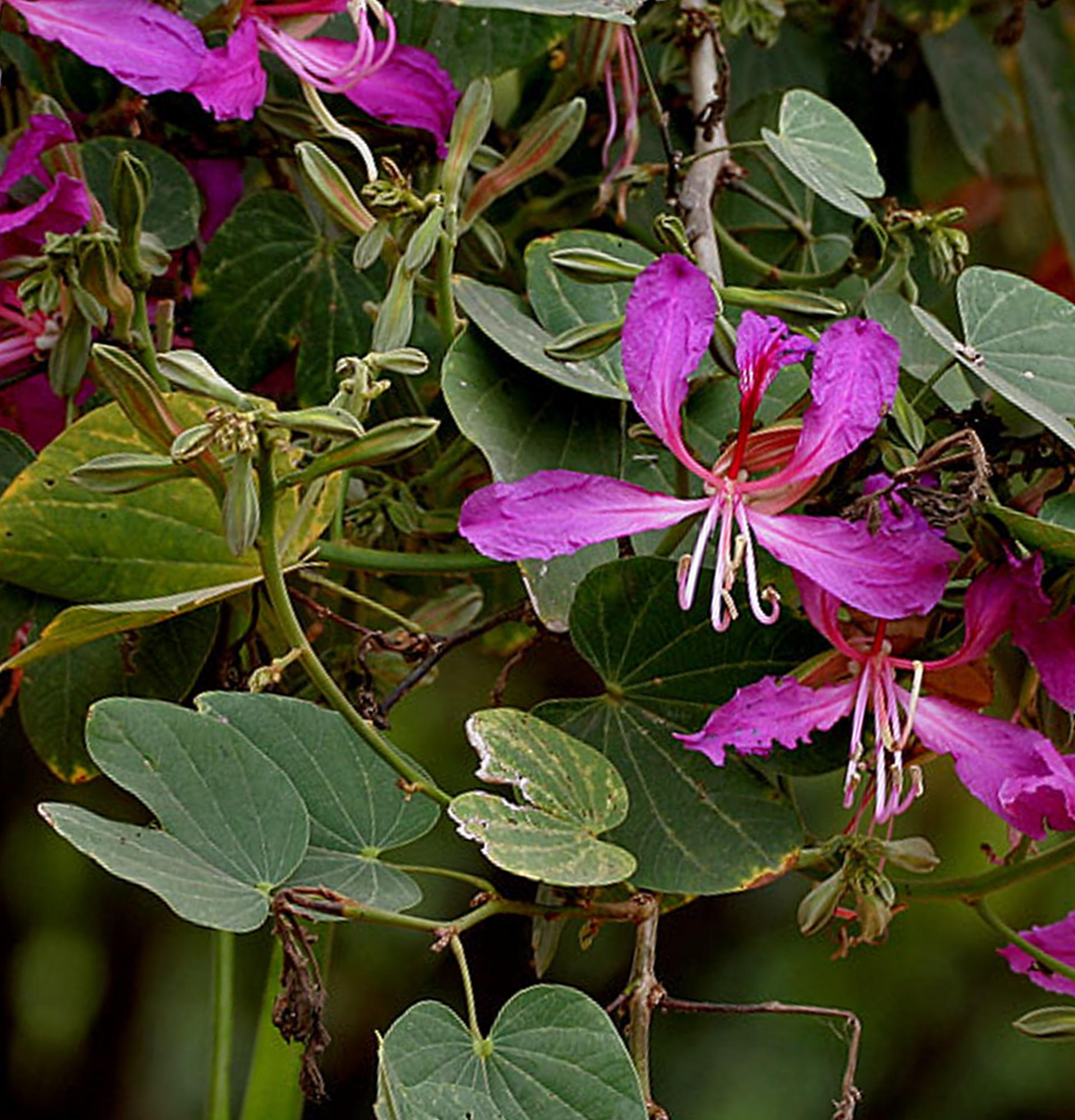 Bauhinia purpurea is the most common variety, which is most often grown indoors. It is represented by an elegant tree with a lush spherical appearance of the crown. Twelve-centimeter picturesque bluish-green leaf plates are located on slightly drooping shoots. Purple bauhinia at home pleases with large ten-centimeter flowers in the autumn. Varied purple tints make the petals with patterned whitish strokes unique. Bauhinia purple flower has large fruits. This chic variety is referred to as the "purple orchid tree."
Bauhinia purpurea is the most common variety, which is most often grown indoors. It is represented by an elegant tree with a lush spherical appearance of the crown. Twelve-centimeter picturesque bluish-green leaf plates are located on slightly drooping shoots. Purple bauhinia at home pleases with large ten-centimeter flowers in the autumn. Varied purple tints make the petals with patterned whitish strokes unique. Bauhinia purple flower has large fruits. This chic variety is referred to as the "purple orchid tree."
Bauhinia motley (Bauhinia variegata)
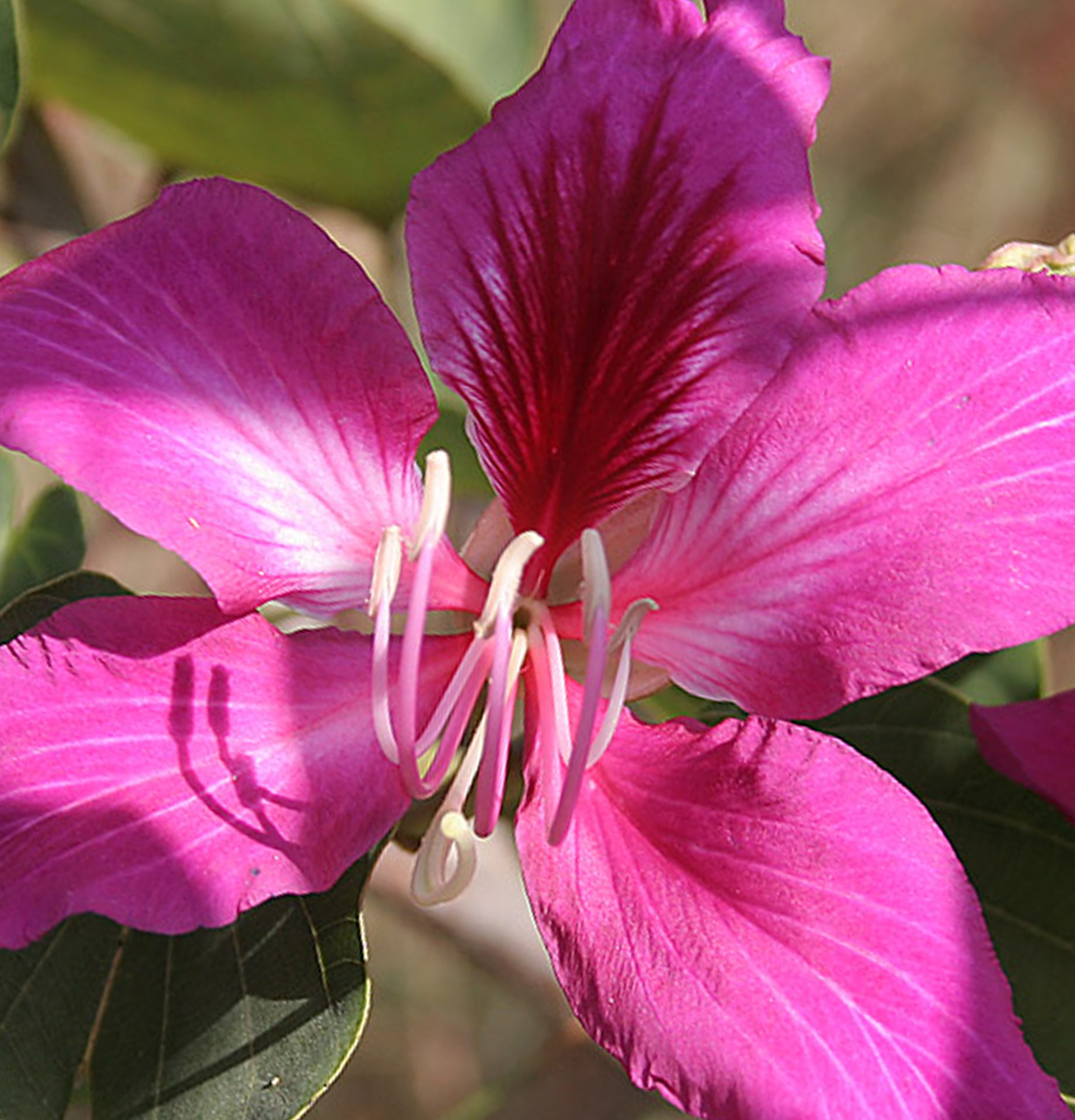 The native territories of this exotic beauty are South Asian territories. Among the people, this kind of bauginia is sung by a chameleon tree. Hindus praise this tree and elevate it to the status of sacred.
The native territories of this exotic beauty are South Asian territories. Among the people, this kind of bauginia is sung by a chameleon tree. Hindus praise this tree and elevate it to the status of sacred.
The location of the bauhinia tree has a great influence on the color of its flowers and growth. In warm areas, a colorful orchid tree can reach a height of ten meters. Its chic crown is decorated with lilac-pink, white eight-centimeter flowers with six stamens and amazing petals that are overlapped.
These unique shrubs and trees are a wonderful decoration of the urban landscape. It is desirable to admire the charms and beauty of this culture from afar.
Bauhinia motley is poisonous.
Bauhinia corymbosa (Bauhinia Corymbosa)
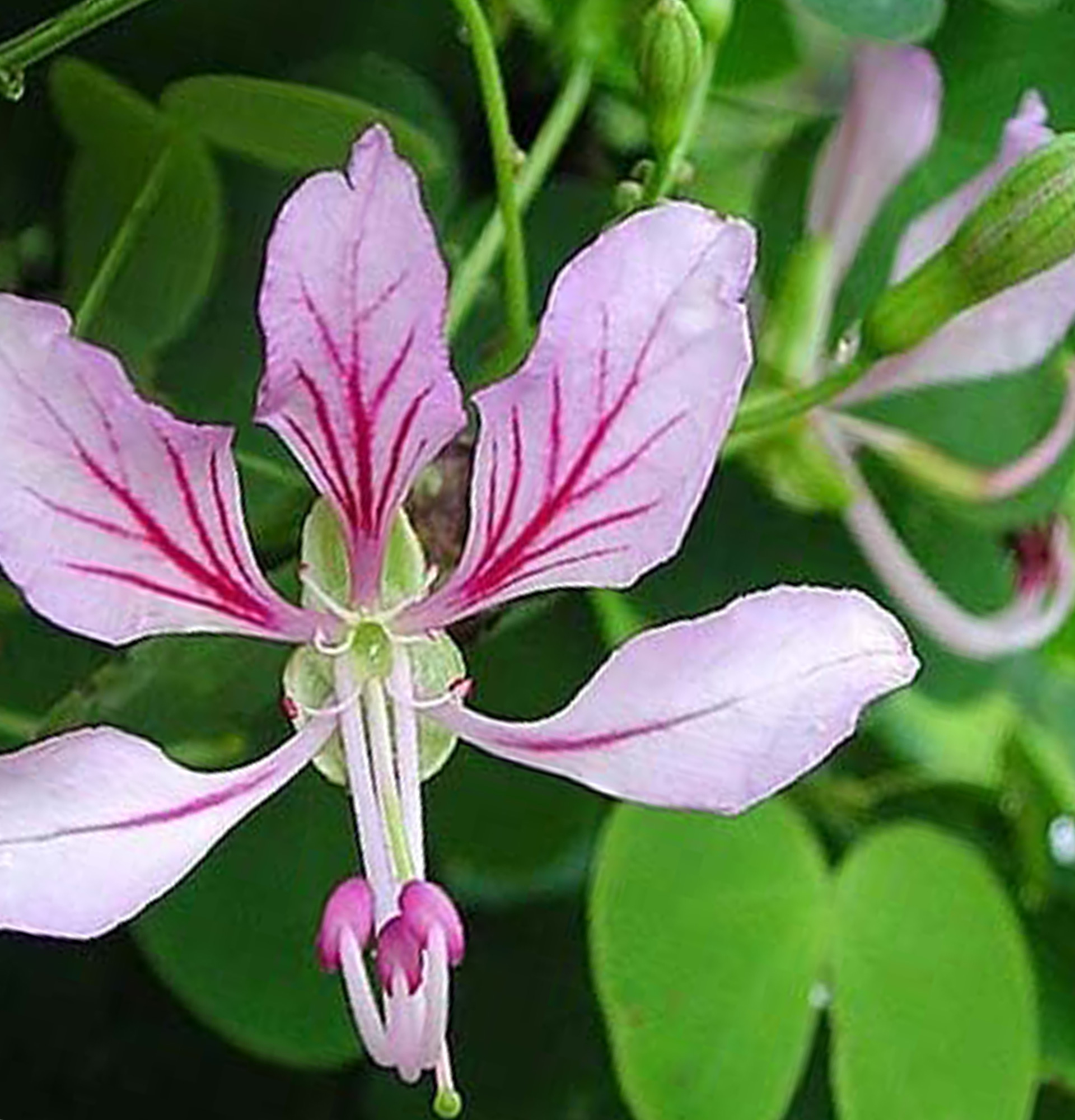 This chic view is a liana, the beauty and attractiveness of which is organized in the spring and autumn period by medium-sized fragrant light-lavender flowers with purple-pink veins. Five-centimeter leaf blades are shaped like hearts, strengthened on the stems with the help of two-centimeter petioles.
This chic view is a liana, the beauty and attractiveness of which is organized in the spring and autumn period by medium-sized fragrant light-lavender flowers with purple-pink veins. Five-centimeter leaf blades are shaped like hearts, strengthened on the stems with the help of two-centimeter petioles.
Faded bauhinia corymbose are covered with bright green twenty-five-centimeter pods with sixteen seeds inside. Ripe pods become brownish.
Bauhinia felt (Bauhinia Tomentosa)
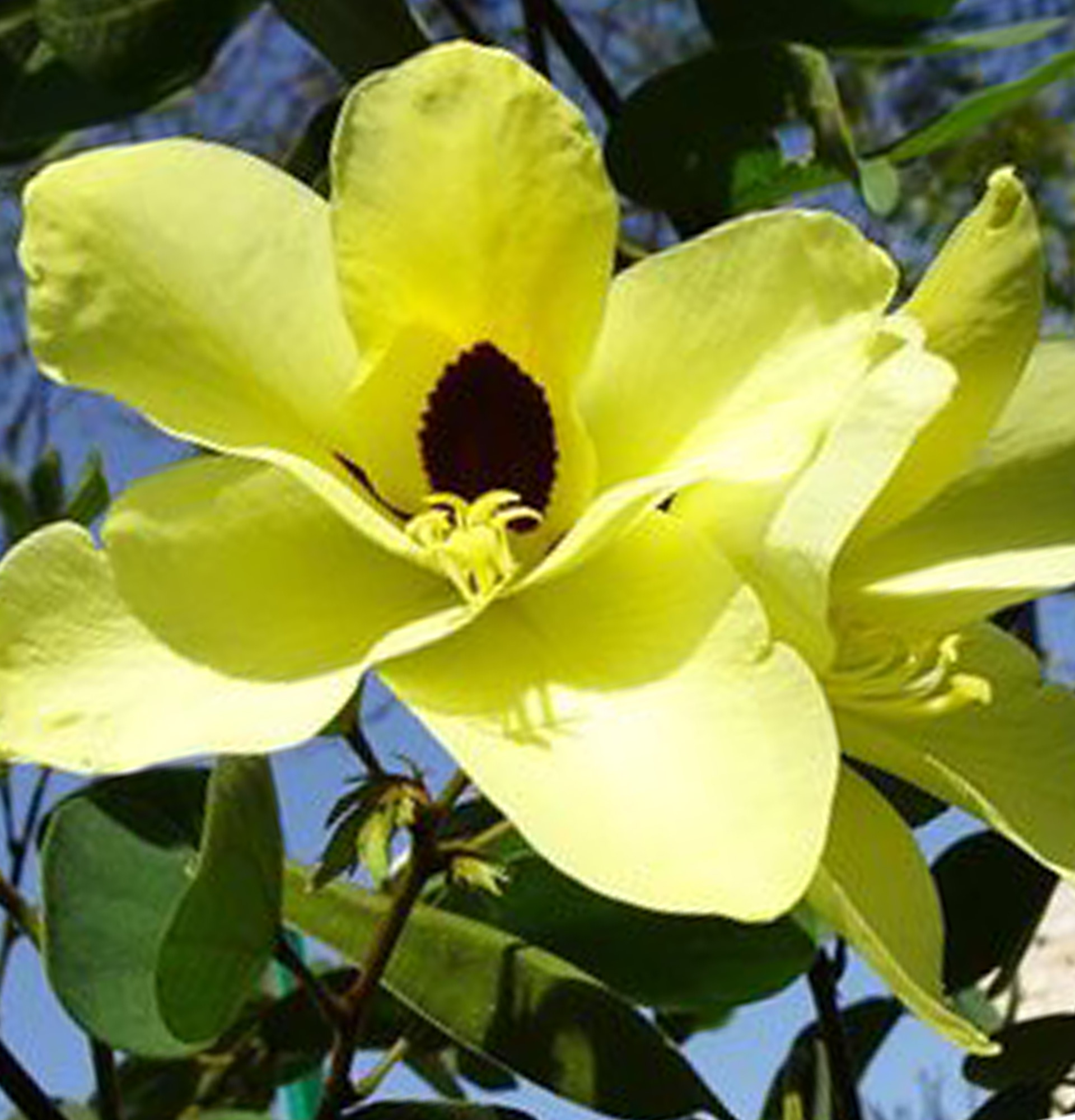 This kind of orchid tree is an amazing shrub or a small, odd little tree with lemon-delicate flowers adorning the tips of thin twigs that bend beautifully under their weight. The central part of the flowers is a burgundy-dark shade. Thanks to this combination, they look very chic in the foreground of green leaves.
This kind of orchid tree is an amazing shrub or a small, odd little tree with lemon-delicate flowers adorning the tips of thin twigs that bend beautifully under their weight. The central part of the flowers is a burgundy-dark shade. Thanks to this combination, they look very chic in the foreground of green leaves.
Each flower blooms only for a day, acquiring a rich purple color. Blooming bauhinia orchid tree pleases with its beauty during the spring-summer time. Thin ten-centimeter pods are filled with ten seeds, which, as they ripen, change their color from green to brownish and acquire a delicate velvety.
Bauhinia monandra (Bauhinia Monandra)
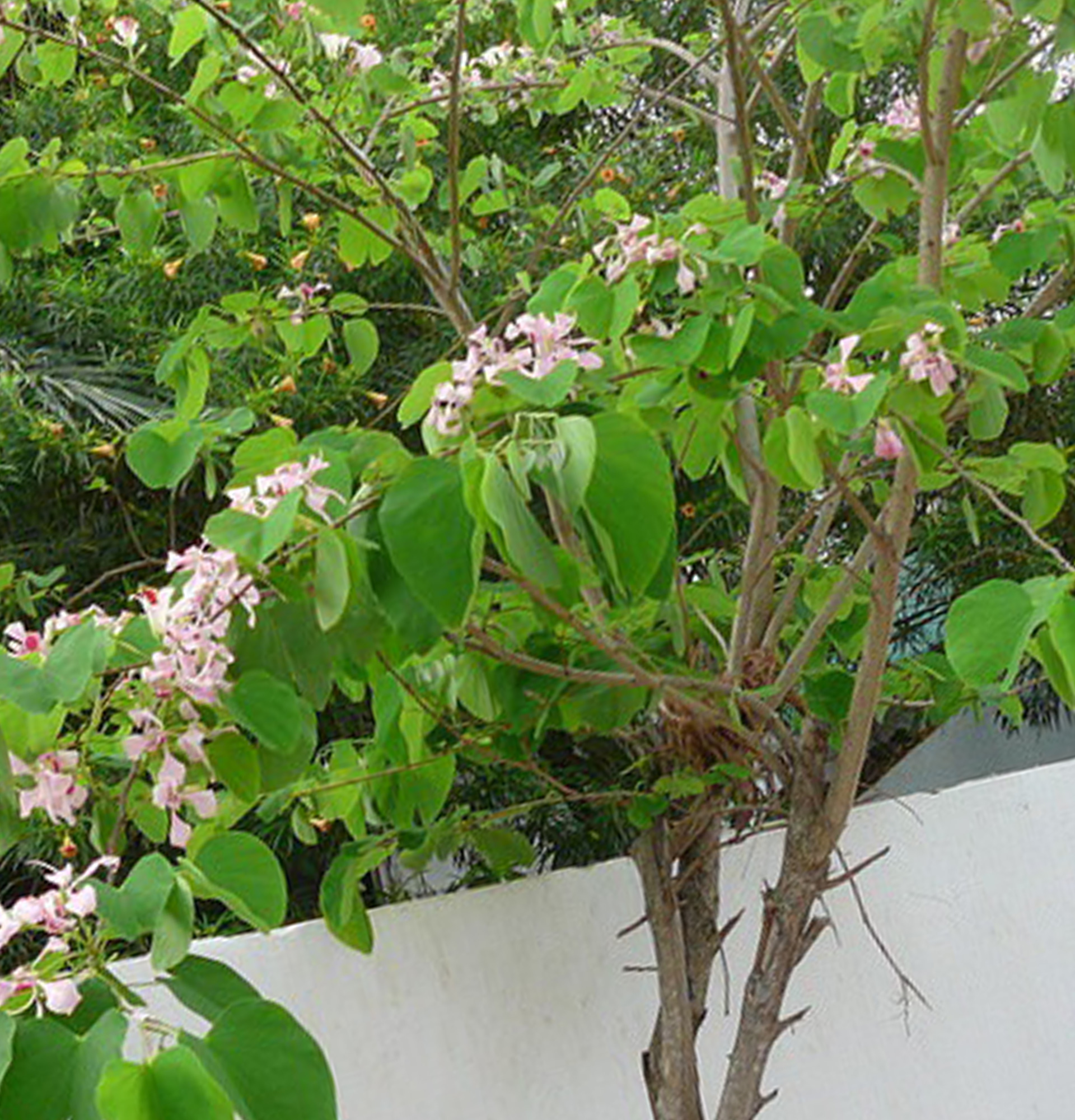 Representatives of a single-stamen bauhinia are a rather rare and very decorative species. Frost-resistant dwarf trees are covered with large leaves. In summer, the plant is covered with solid white flowers, which are collected in racemose inflorescences.
Representatives of a single-stamen bauhinia are a rather rare and very decorative species. Frost-resistant dwarf trees are covered with large leaves. In summer, the plant is covered with solid white flowers, which are collected in racemose inflorescences.
For twenty-four hours, the flowers change their color to pinkish-pastel. Purple dots, strokes and inclusions make the flower unsurpassed. Sometimes this miracle is called the "pink orchid." Some flower growers call single-stamen bauhinia lonely for the regular appearance of single flowers.
Bauhinia Malaysian or Pointed (Bauhinia Acuminate)
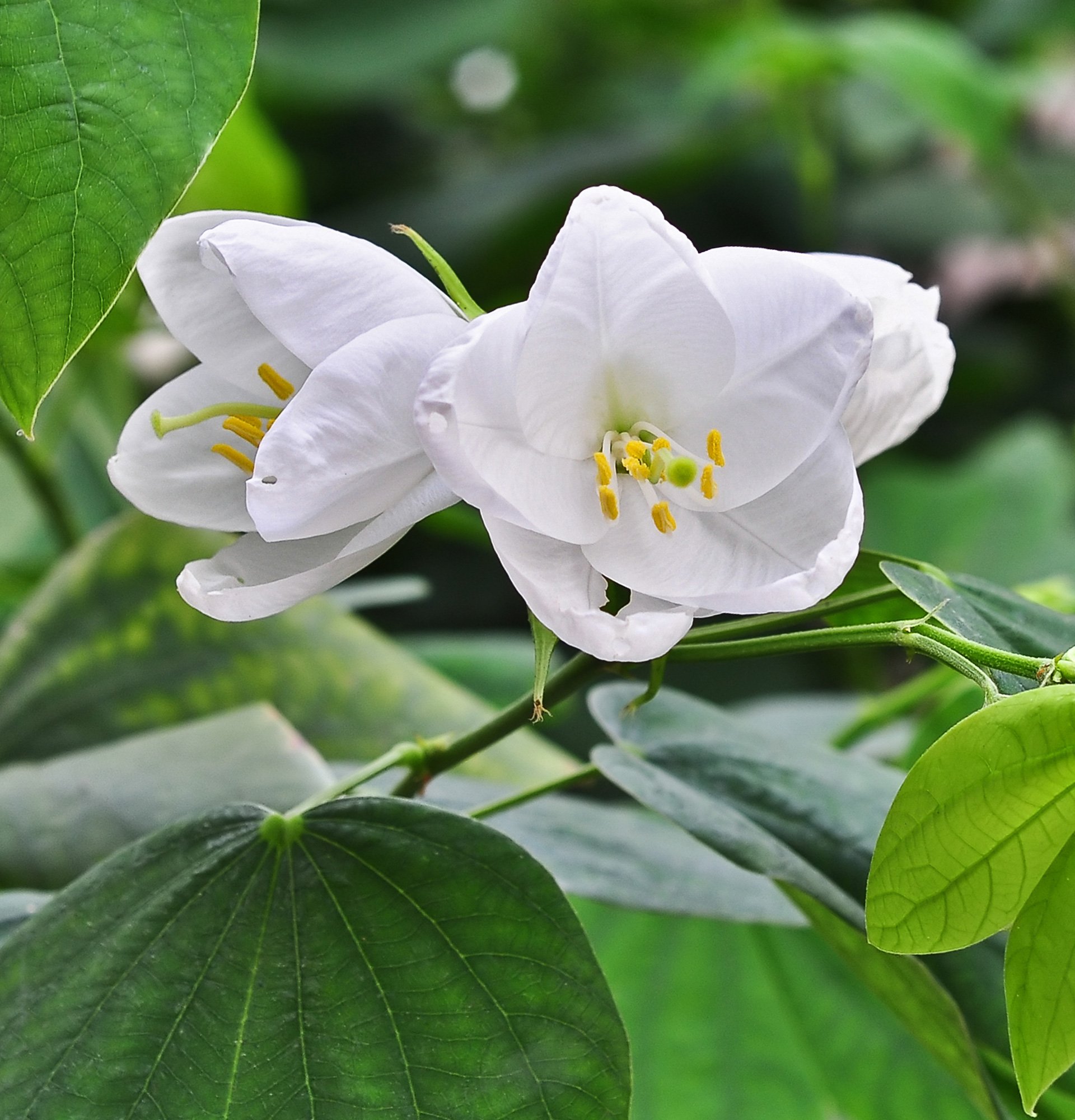 This variety of bauginia grows as a bush or medium-sized tree. The height of the plant in natural conditions reaches a height of three meters. Home conditions allow bauhinia pointed to reach a height of one and a half meters. The plant has decorative two-lobed ten-centimeter leaf plates that resemble butterfly wings or a hoof. They can fold up if they are hot or very cloudy weather conditions.
This variety of bauginia grows as a bush or medium-sized tree. The height of the plant in natural conditions reaches a height of three meters. Home conditions allow bauhinia pointed to reach a height of one and a half meters. The plant has decorative two-lobed ten-centimeter leaf plates that resemble butterfly wings or a hoof. They can fold up if they are hot or very cloudy weather conditions.
This unique flower blooms with white ten-centimeter flowers during the day, and then wilt occurs, giving way to the next flower. During this short life period, the present pleases with a pleasant, faint smell, resembling an apple blossom. At the same time uplifting and presents spring notes. Blooming Malaysian bauginia can be contemplated in spring and summer.
Bauhinia home care
Like all flowering flowers in pots, bauhinia craves conditions close to natural conditions. Your beloved pet must be provided with pleasant warmth, regular high-quality watering according to the season, sufficient lighting, a competent and correct rest period.
Choice of location and temperature
Light-loving bauhinia at home will not give up a place with bright diffused sunlight. These blooming indoor flowers will feel great on the windowsills of the south, southeast or southwest orientation.
Direct sunlight must be shaded, and it is desirable to extend the daylight hours up to fifteen hours with fluorescent lamps.
A heat-loving orchid tree in the summer during the growing season needs to maintain warm conditions with a run-up of temperature indicators within 15-25˚С. Unpretentious houseplants of bauhinia wish to winter at 13-15˚С. They can also be in colder environments, but not for a long time.
Protect indoor bauhinia from drafts.
Humidity and watering
High levels of air humidity for home bauginia are not relevant. It is not necessary to spray and bathe it, except for hygienic purposes. You can limit yourself to wiping the leaves with a wet sponge from dust.
The orchid tree is a drought-resistant vegetation. It needs to be watered during active growth and flowering very generously. In the cold off-season, we limit watering, the earthen mixture should be dried up by a third of the pot. It is advisable to use water slightly warmed up to the temperature in the room rain, melt, settled or boiled.
Do not allow stagnant water in the flowerpot.
Soil and its top dressing
Bauhinia orchid tree does not impose special requirements on the composition of the substrate. A standard potting mix that is designed for flowering houseplants can be purchased at the store. It is easy to prepare the substrate individually. Take in equal quantities sheet, sod, humus soil and coarse sand or perlite in half the norm.
In the spring, it is advisable to feed indoor bauhinia with fertilizers with impurities of nitrogen compounds, and a flowering orchid tree needs top dressing with potash and phosphorus fertilizers. By the end of the summer period, with subcrusts, they round off before the onset of spring.
Bauhinia transplant
An annual spring transplant of a young bauginia into a flowerpot one centimeter larger than the previous one is necessary for the plant. Older specimens are transplanted at intervals of four years.
A good drainage layer is required.
The transplanted bauhinia must be well watered and placed in a dimly lit area for three days. Avoid direct sunlight.
Bauhinia reproduction
You can grow a beautiful orchid tree from seeds, cuttings or air layering.
Bauhinia from seed can be flowering in as little as two years. To do this, collected well-ripened seeds must be soaked for a couple of days. Then sow in a peat-perlite mixture to a depth of five millimeters. We create conditions for a mini-greenhouse. Sprouts will appear from three days to six weeks. As they grow up, plant them in separate flowerpots.
Pests and diseases
At the slightest violation of the rules for keeping a plant, uninvited dangerous guests can be immediately detected on it. So bauhinia love scale insects and red spider mites. If you find unexpected clients, you can process the orchid tree and apply a soap, onion or garlic solution. If this procedure is not enough, we turn to the use of insecticides.
Difficulties encountered in growing
- The orchid tree does not show signs of flowering - an excess of nitrogenous fertilizers is possible, it is necessary to add top dressing with complex fertilizers, it is desirable to transplant a flowering houseplant.
- Leaf blades begin to turn yellow, and the central veins remain green - excessive soil moisture, we control watering.
- The tips of the leaves dry out slightly - the temperature in the room is high, and the humidity is low, the air is too dry.
- The leaves are curled - there are not enough calcium and potassium compounds in the soil, the flower needs to be fed.
- Leaf plates fade and turn pale - too much direct sunlight, change the location of the plant.
When caring for bauhinia, we apply precautionary measures - the plant is poisonous.
Unpretentious blooming indoor bauhinia flowers, very exotic tropical plants, will be a wonderful interior decoration. Love your orchid tree, fulfill the extraordinary requirements of its cultivation, and it will thank you for its long flowering, surprise you with its unique and unsurpassed beauty, and decorate your flower collection.




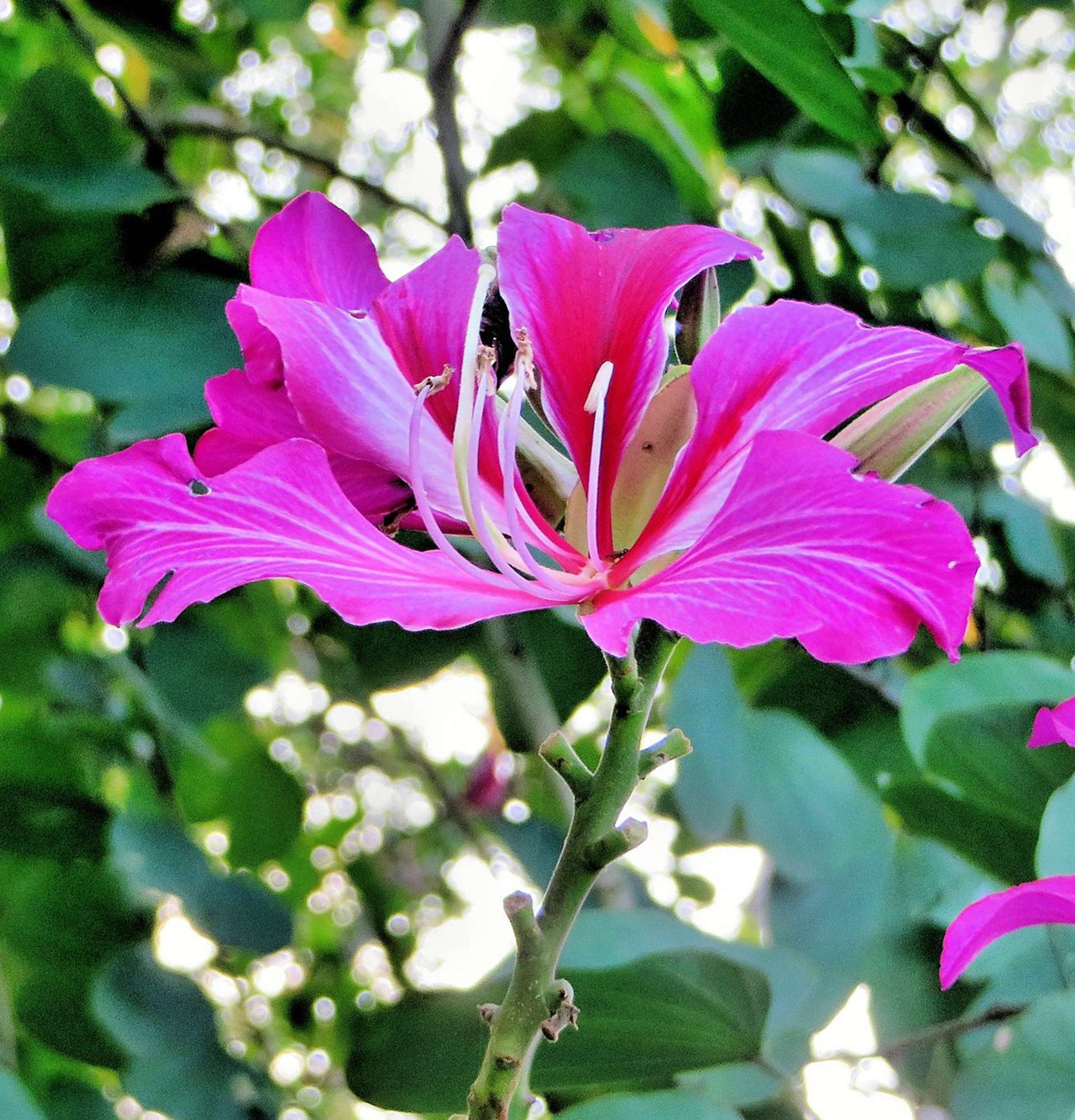










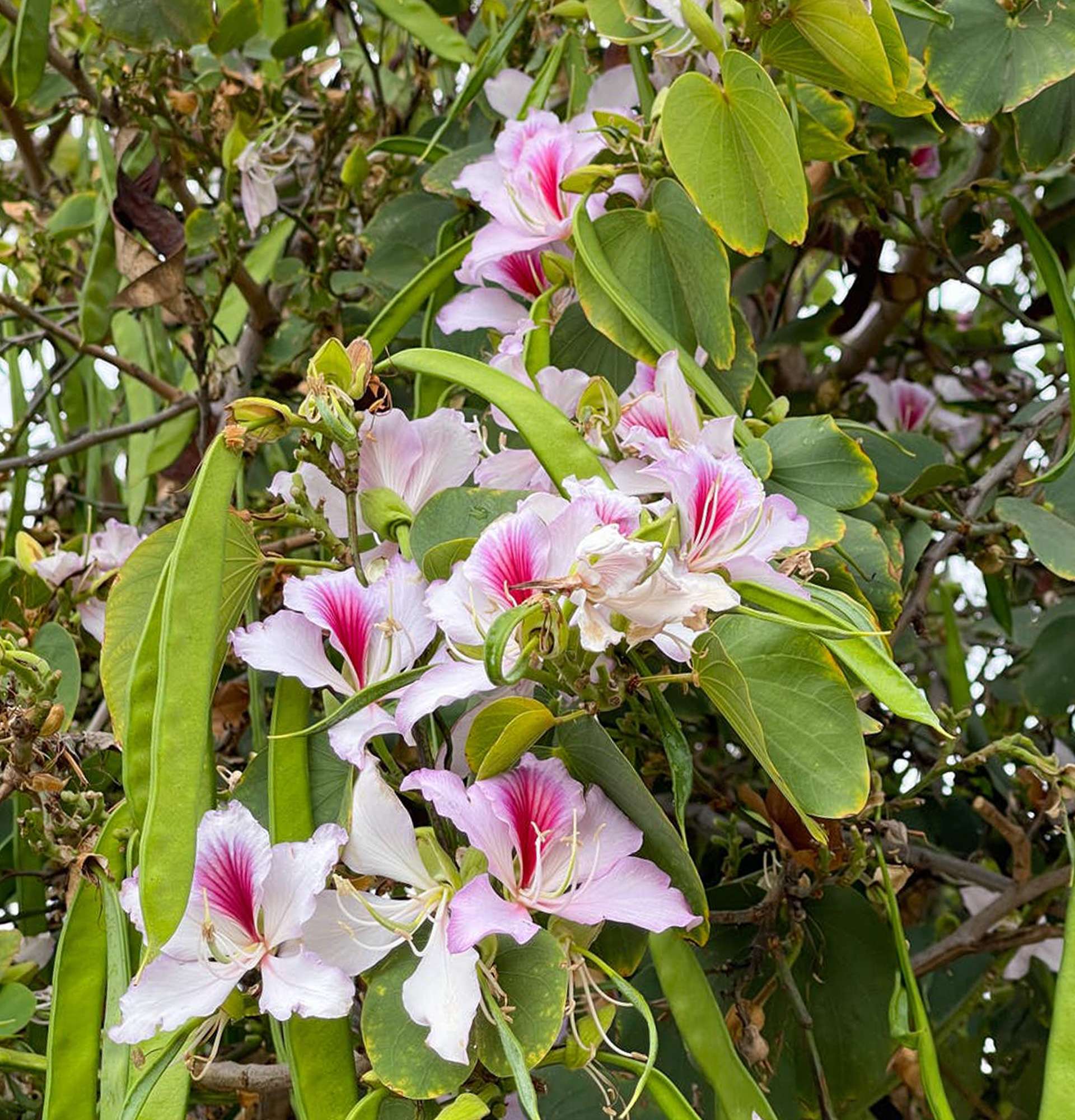
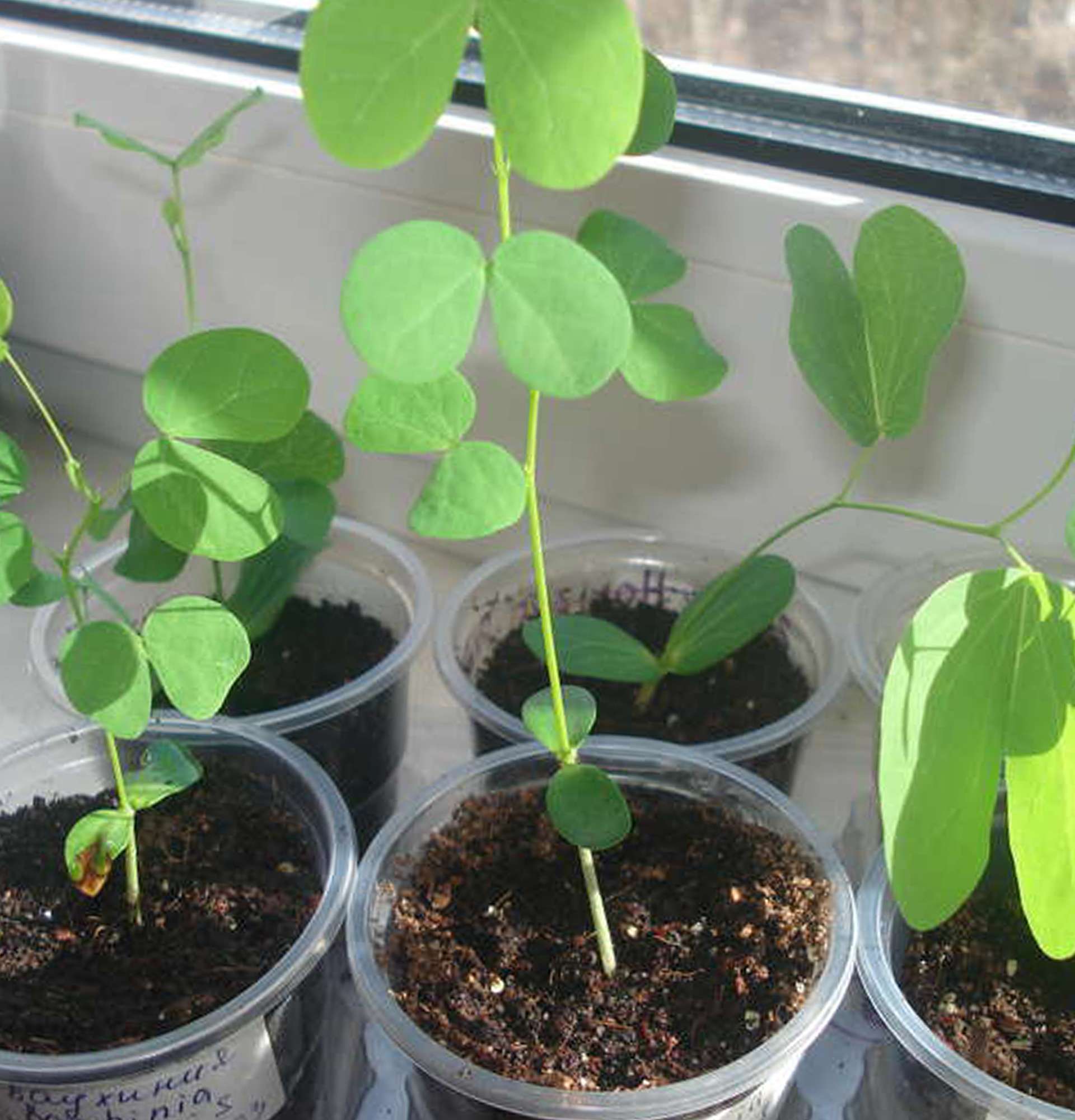
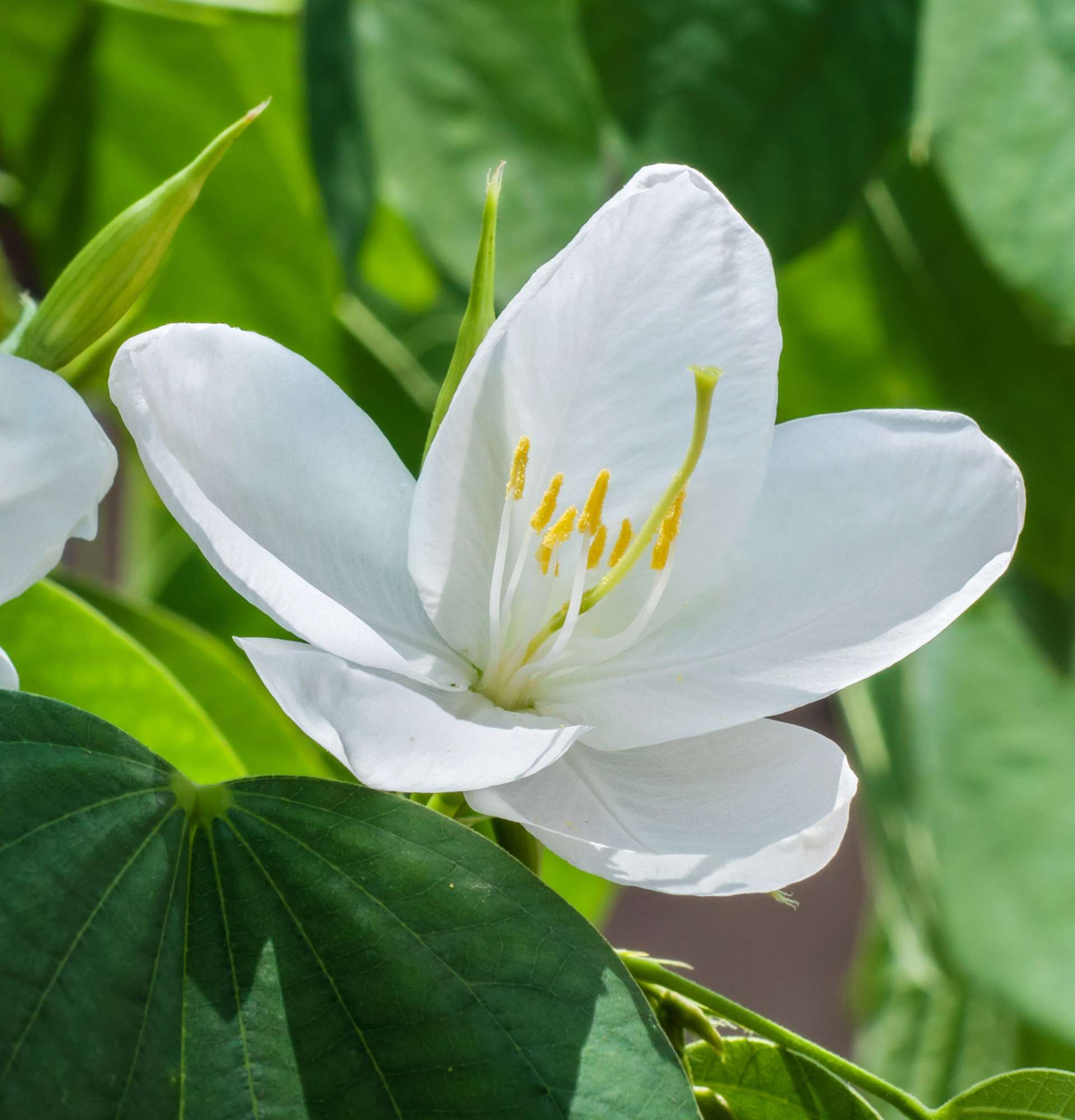
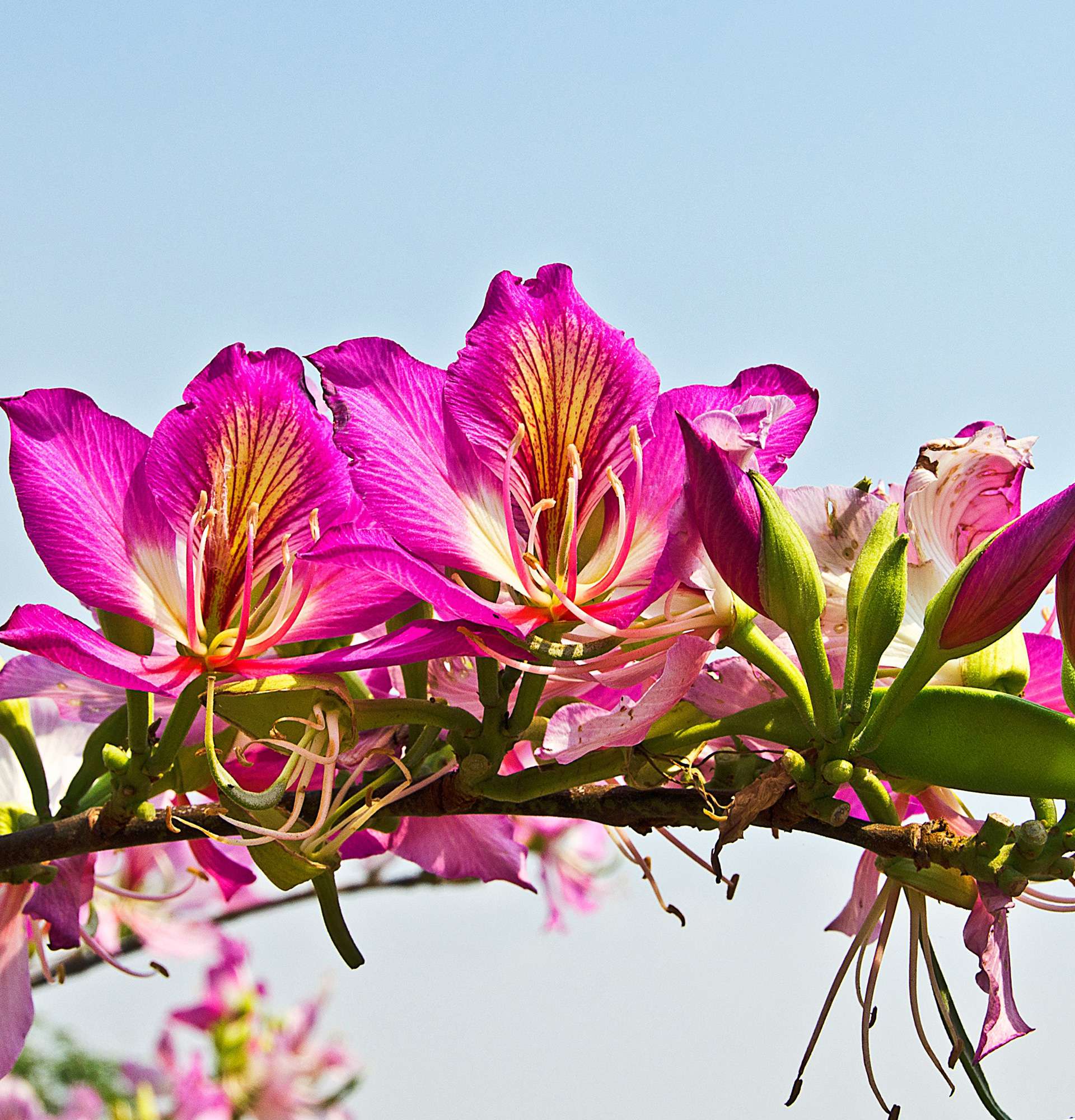

Write comments
Comments